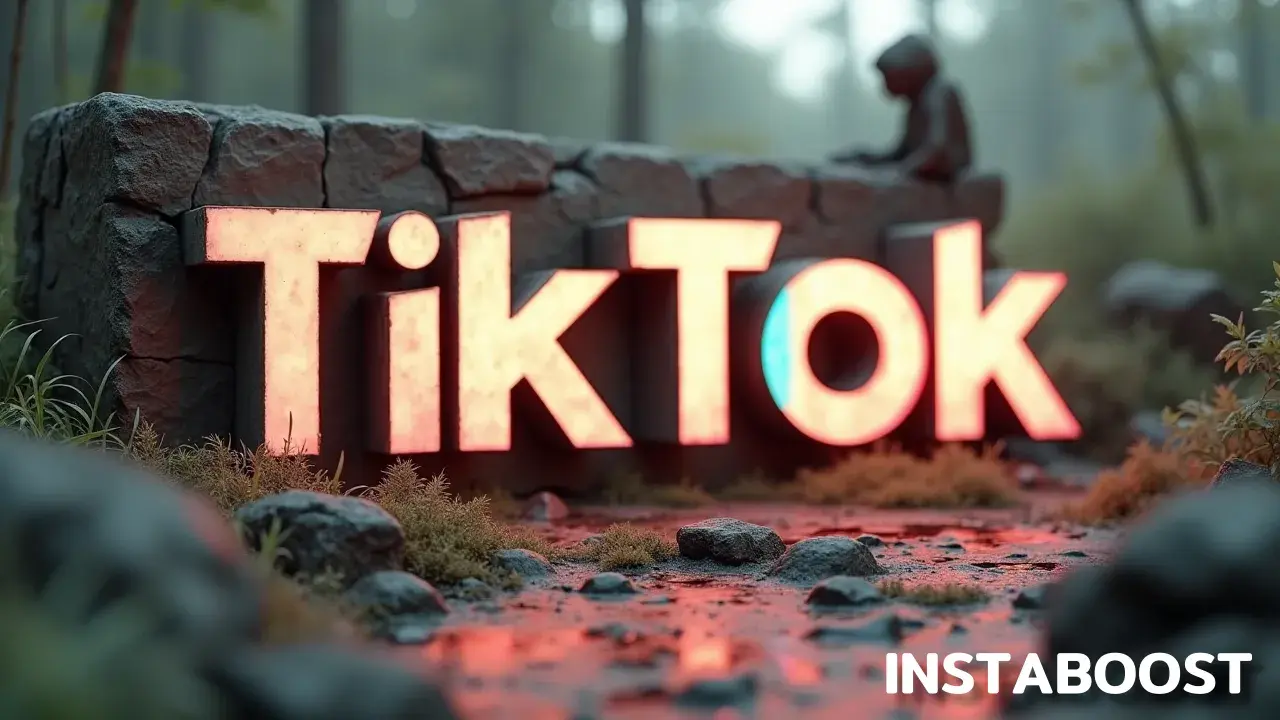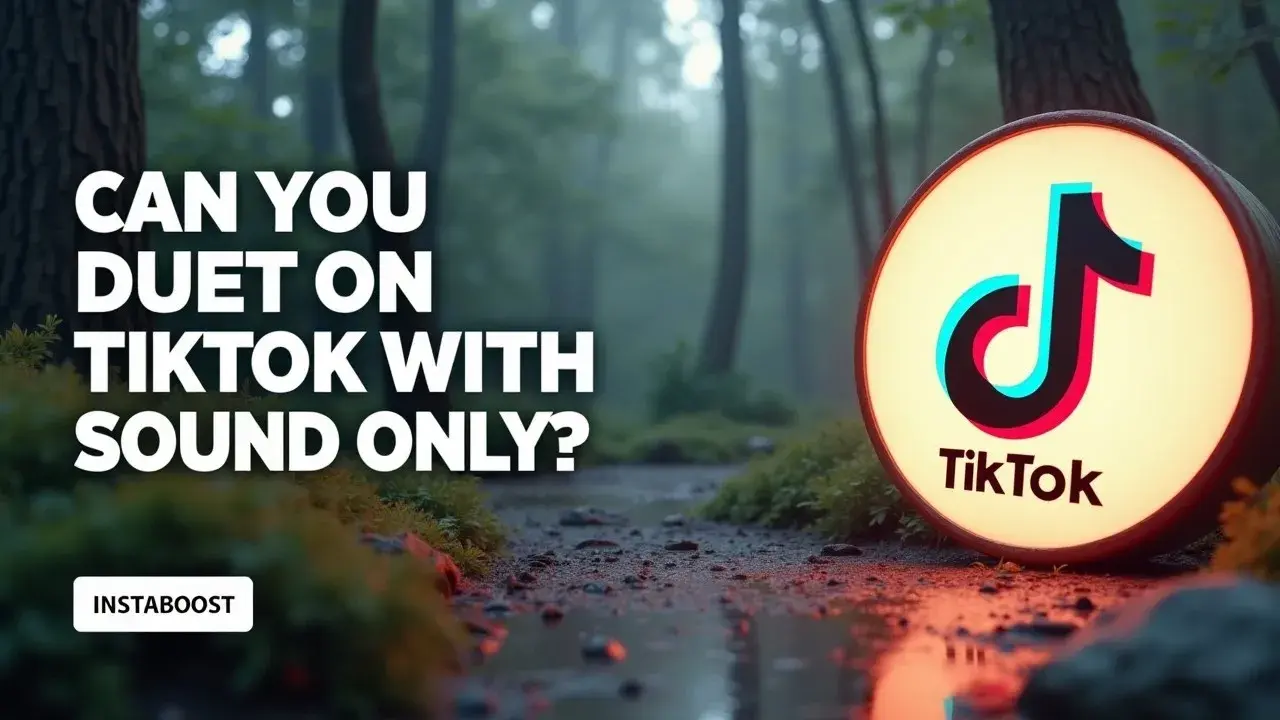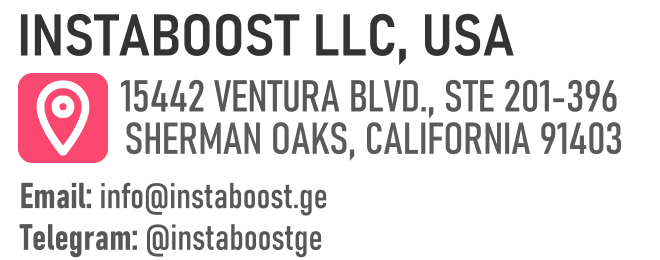Can You Duet on TikTok with Sound Only?
Sound-only duets are possible and can be effective for creators focused on voice and pacing. This approach streamlines production while highlighting reactions and clearer narratives without visual distractions. Performance should be validated by tracking watch time holds and repeat listens to ensure the format fits the audience. When followers prioritize audio clarity, this method can deliver steady gains and a repeatable, on-brand cadence.
Why creators are testing sound‑only duets on TikTok
Most people picture a TikTok Duet as a split-screen reaction, but you can absolutely build one with sound only and make the audio the main event. The upside is speed and focus – no lighting, no camera blocking, fewer retakes.
That pairs well with formats where voice does the heavy lifting, like commentary, coaching, music harmonies, translation, or stitching context onto trending audio. It works when your concept rewards listening and you time it for moments when your audience is commuting, studying, or scrolling with low visual attention. The practical move is simple: pull the source audio legally in the app, record a clean response track, and add minimal visuals that do not compete – a static cover, a waveform, captions, or a single branded frame.
That pairs well with formats where voice does the heavy lifting, like commentary, coaching, music harmonies, translation, or stitching context onto trending audio. It works when your concept rewards listening and you time it for moments when your audience is commuting, studying, or scrolling with low visual attention. The practical move is simple: pull the source audio legally in the app, record a clean response track, and add minimal visuals that do not compete – a static cover, a waveform, captions, or a single branded frame.
Then validate the format with clear analytics. Watch for holds at 3 seconds and 50%, repeat listens, and saves. Real comments asking for “pt 2” or tagging friends are stronger retention signals than raw views. If you want early momentum, pair a tight upload cadence with targeted promotion from a reputable ads account and a small creator collab that shares your audience, and if you need a reference point for campaign hygiene and targeting norms, see the ultimate TikTok solution as a benchmark rather than a prescription. That setup can amplify reach without muddying attribution.
Sound-only duets are not a shortcut for weak ideas – they shine when pacing, tone, and timing land. Use a noise gate, crisp captions, and a hook in the first second. Keep a testing loop. Swap mic setups, vary tempo, and adjust clip length to find where completion curves flatten. If you monetize, add safeguards around licensed music and disclose collabs to keep trust intact. For search visibility, anchor your caption with TikTok duets phrasing and a clear outcome so people looking for how to duet on TikTok can find and binge your series.

Proof That Sound-Only Duets Build Trust (and Data)
My best insights came from failure, not theory. In my first week trying a TikTok duet with sound only, I buried the take in reverb and rushed the pacing. Comments were polite, retention was not. The fix wasn’t fancy gear. It was standards. A clean noise floor, tight edits around the beat, and intentional breath placement turned the same script into a 2x watch time lift and real comments that referenced specific moments.
That’s the credibility play. When you strip the split-screen, your voice becomes the product, and your audience quickly learns whether you can carry a narrative. It works when you pair simple, repeatable audio setups with a testing loop – two versions, one change, measured by hold at 3 seconds, 25%, and repeat listens. If you add paid promotion, use a small, targeted boost after organic signals land. Reputable placements protect your cost per repeat while clean analytics confirm fit. Creator collabs help too.
Bring in a qualified vocalist or coach for a layered harmony or a tag-team critique, and your duet reads as craft, not gimmick. For brand accounts, sound-only duets lower approval friction and speed up publishing, which compounds learning; for solo creators, they’re a fast way to practice delivery and build authority in commentary, translation, or coaching without camera anxiety, and even the optics of tiktok followers don’t change the core lesson that your cadence carries the proof. The non-obvious insight is that credibility on TikTok rarely comes from visuals. It comes from predictable pacing that makes listeners feel smarter by the end. Treat each duet like a podcast micro-segment – hook, proof, payoff – and you’ll see steady gains in your TikTok duet metrics, especially repeat rate, even before you scale with tools or trials.
Design Your Sound-Only Duet to Win the First Three Seconds
If it doesn’t scale at your worst, it won’t last at your best. Treat a sound-only TikTok duet like a stress test and optimize for retention and replays when conditions aren’t ideal. Lead with one concrete promise in the first three seconds and pay it off clearly at the end. Cut to the beat – trim breaths that don’t build anticipation, leave micro-pauses where someone might type a comment, and hit key words on the source track’s peaks so your voice locks in. Record at a steady distance with a stable noise floor. Predictable inputs make analytics useful and help you see what’s actually working, and even the temptation to grow tiktok likes won’t substitute for a clean baseline when you’re reading lift.
When you promote, pick qualified placements – creator collabs or targeted boosts where people already engage with commentary, coaching, or harmonies – so early momentum reflects fit instead of vanity traffic. Add simple safeguards like pinned timestamp comments, a caption that names the payoff, and a callout inviting stitchable replies to seed real discussion. Run a tight testing loop across variants like pace, EQ, and intro line, and watch three signals: 3-second hold, 50% completion, and comment specificity. If numbers dip, adjust pacing before rewriting the concept, since pacing fixes often recover watch time faster than new scripts. For campaigns, batch-record three takes per script – neutral, energetic, and intimate – and schedule them against your audience’s active windows to validate timing without muddying data. Sound-only duets work when your voice carries the narrative. The strategy is to make that voice easy to follow, easy to quote, and easy to replay so the algorithm reads intent and your audience trusts the follow.
The Objection: “Sound-Only Is Too Bare to Convert”
I’ve lost track of the failed tries, mostly because the premise is off. A sound-only TikTok duet isn’t a downgrade – it’s a fit filter. If your topic leans on facial cues, B-roll, or visual proof, you’re adding friction. If the value sits in timing, contrast, and a clear payoff, audio-led duets often hit harder than they look. The usual pushback is that no face means no trust, yet early tests showed the opposite.
A clean noise floor and breath-aware edits surface intent signals faster than split-screen theatrics. Treat that tension as a design constraint. Pair the duet with retention signals you can measure – three-second hook holds, mid-roll replays, and comments that reference timestamps – so you know if the voice-first format is landing; if you’re modeling distribution paths, account for baseline volatility and not just spikes from increase tiktok views artifacts that mask message-market fit.
If you want acceleration, use targeted promotion or a small creator collab to seed early momentum, matched to intent and backed by clean analytics, so you’re not amplifying a weak open. Think of paid as a lever, not a crutch. It works when the promise in second one maps directly to the payoff at the end and your captions clarify the context. If you’re worried about monotony, rotate micro-formats like call-and-response with the original, reactive rhythm cuts, or a two-beat tease followed by a clipped answer. The win isn’t aesthetic – it’s cadence and consequence. If your audience values clarity, a sound-only duet strips away excuses and makes narrative strength obvious. And if tests dip, take it as signal, not failure. Tighten the beat, raise input gain, and rerun. Conversion follows comprehension, and audio is often the shortest path.
Close Strong: Turn Audio Into a Purchase Path
Let the discomfort do its job. The pressure you feel releasing a sound-only TikTok duet is the same force that sharpens your hook, pacing, and promise-to-payoff rhythm in a way people remember. If earlier sections were about winning the first three seconds and filtering for fit, the finale is about conversion that doesn’t need hand-holding. Tie the CTA to the value you just delivered in the duet – one benefit, one next step – and keep it friction-light with a pinned comment and short link, on-screen captions for the CTA, and a comment reply that sums up the key takeaway. Pair the audio-first clip with clean analytics so you can isolate retention signals, real comments, and repeat listens, and sanity-check performance against shares from active TikTok users to separate novelty spikes from durable engagement.
If you add targeted promotion, keep it to qualified audiences already interested in the topic so you don’t muddy the data. Creator collabs are an accelerant when the partner’s voice and cadence match your format. Record a quick two-line tag that tees up your offer so it feels native, not tacked on. Sound-only duets convert when the promise is specific and the proof is audible – numbers, steps, outcomes – and the timing respects listener context like commutes, chores, or the gym. Use a testing loop: three variants of the opener, two CTA phrasings, and a control. If the “too bare to convert” objection lingers, take it as a cue to sharpen language, not add B-roll. The quiet advantage is replayability. Replays lift watch time and push distribution. Treat that lift as early momentum, then scale with safeguards – frequency caps, UTM-tagged links, and a 72-hour read on watch time and click-through – before you expand budget. Sound-only works when you make clarity the luxury.















